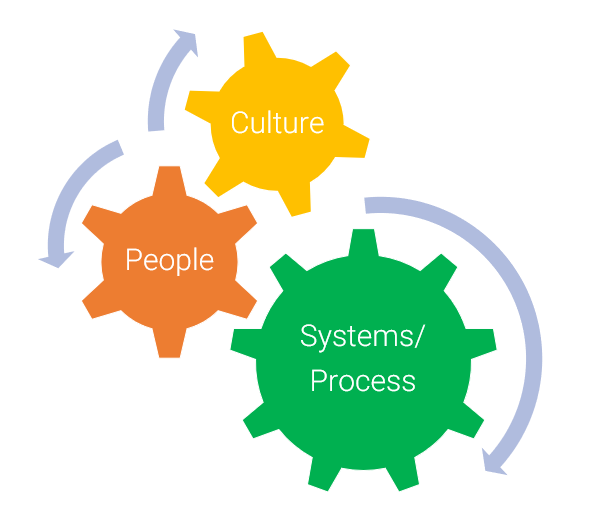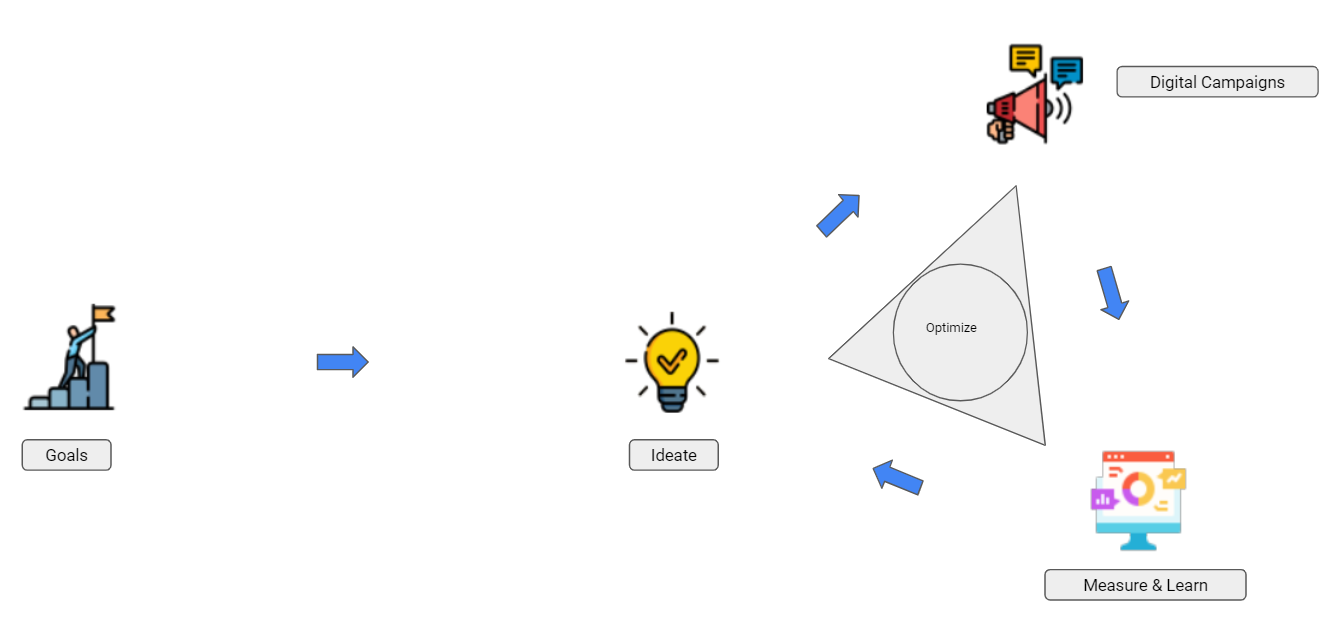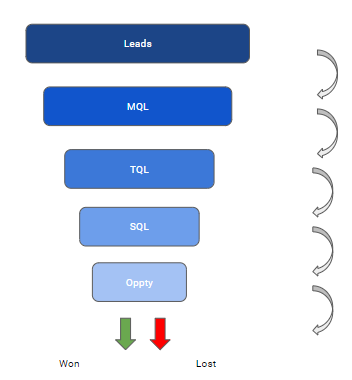Rocketship Growth — the Who, What, and How
Rocketship Growth — the Who, What, and How
A well-oiled growth machine is a foundation for business success.
In this article, I will cover three areas to build a strong growth function
- Culture
- Systems & process
- People & functions
As you can imagine, all these 3 are highly interdependent.

Culture
Let me first start with the famous quote from Peter Drucker — Culture eats strategy for breakfast. The strategy is important, but you need to have the right culture and the right people. The key to building a strong growth team is to be conscious about the culture and build a sustainable long-term culture.
There are three main attributes to look for as you start hiring.
Growth mindset or continuous experimentation — As you start a new growth function, you will always have more things you would want to do than what you have people or budget. For optimal performance, rely on the 80–20 rule — where 80% of the results come from 20% of the effort we put in. The big question is to find out which 20% of the effort and then prioritize that. The best way to get to is to build a culture of continuous experimentation and identify the 20% in a reasonable amount of time. Once you identify, be laser-focused on it and continue to double down. Failure is an inevitable element of experimentation. Identifying failures quickly and pivoting to the things that are working is a critical element for success.
Data Obsessed — For the team to perform continuous experimentation, it’s foundational to have easy access to data and be obsessed with it. The data should tell the story. A great growth marketer should have a closed-loop system that correlates between what you do and how it impacts the results. Continuous and close monitoring of the data and the trends will help you understand what is working and what is not and get us closer to the things that matter.
Results-driven approach — Every member of the team should take ownership of the results and not the tasks. The tasks are the way to accomplish the results. A good example would be to think about your work as — I wanted to drive x$ of Revenue and to achieve that I need to do a, b and c tasks. In the OKRs, your goal is not to complete the a, b, and c task; rather, your focus is to meet the x$ revenue metric. Another example — a not-so-great way of writing an OKR is — I bring 100 leads in Q1. A better way would be to “Generate 100 leads that convert at y% with an average deal size of z$”.
To summarize, it is important to be conscious of the culture you build within the growth team. You are not just looking for fundamental values like mission-driven, inclusive, respectful, fun, hardworking, etc. A strong team embodies a growth mindset, is data-driven, and results obsessed.
Process
The starting point for the growth team is learning the company goals. The company goals could be Revenue, # of partnerships, # of new customers, etc.
One of the first tasks is to create a business model to map marketing goals to the company goals.
Marketing goals
A simple example for Revenue in the business model could look like:
Revenue = (# of Qualified Leads) * (% of leads converted to Opportunity) * (% Opportunity Win rate) * (Average Deal size)
In the above example, the marketing team will own the # of qualified leads and share the ownership with sales for % of leads to opportunity conversion metric. This is a shared metric because marketing is accountable for the lead’s quality, and sellers are responsible for influencing the lead to convert it into an opportunity.
As you can see, this business model helps you translate company goals into marketing goals.
Once there is clarity in marketing goals, our next step is to start building a process for running campaigns.
Marketing goals lead to campaign Ideation -> in turn; it leads to execution of digital marketing tactics -> which we measure & learn, leading to more campaign ideation. This is a continuous cycle that needs to be optimized for operational excellence.

Once a business model is defined, align the model and the assumptions with all the business leaders inside the company, including the CEO/GM of the product, the product leadership, and sales leadership. If there is no historical data for the business model, keep it as simple as possible with few variables. The first year will be all about validating and fine-tuning the assumptions on the business model. Our goal is to incrementally update assumptions on the model to get to a more reliable model.
From the business model, the marketing growth OKRs should be evident. Get a good sense of the overall marketing budget (directional) from the leadership. Update the model accordingly.
Structure the marketing OKRs in the SMART pattern. SMART is a well-understood, industry-standard way of writing objectives.
Defining a growth architecture
As part of building the process workflow, it’s important to put together a growth architecture. A sample architecture would look like this

The marketing automation(MA) system is the heart of the growth engine. You wanted to integrate all your data sources into the MA. MA engine should have a 360 view of the customer and capture all customer interactions with the company.
A strong layer of data infrastructure is needed to capture all data from every system in the architecture. This serves as your single source of truth for the data and insights.
Optimizing lead scoring and leveraging AI across the architecture is essential to improving the overall funnel and conversions. You wanted to measure every point in the flow and understand how the metrics deviate as you run campaigns.
Building a strong growth architecture is a topic by itself and I will cover that in detail later.
Ideate campaigns
The next set of tasks includes coming up with ideas for campaigns. We need a constant flow of new ideas. Test every campaign to measure the effectiveness against the marketing goals.
Examples of campaigns are
- Automated email nurture campaign for a lead with a content hook
- Community programs that help with lead generation. Ex — conferences, events, webinars
- Offer driven campaign to increase lead acquisition
Campaigns can be broadly classified into 2 — brand campaigns and demand generation campaigns. Brand campaigns are expensive to execute at scale. If the company is at an early stage, focus more on Demand generation campaigns than Brand campaigns. The first few years for a product is to build adoption, and hence the campaigns should be more focused on lead generation.
Come up with innovative ways to differentiate your brand from your competition. Build messaging and positioning to cater well to your audience. One of the best ways to build a brand is to focus on a niche domain where the product value proposition is strong. This gives us a smaller audience to market to. This also helps in creating unique content to cater to that audience. The leadership content could be used as a hook to generate leads.
A detailed example of a campaign could be something like this.
- Create an amazing piece of leadership content for a specific audience.
- Create a lead capture form or landing page for the content download.
- Drive traffic from different sources to the lead capture form.
- A percentage of the visitors signs up and downloads the content.
- Integrate the lead form into the marketing automation system. Once a visitor signs up, a new lead is created in the marketing automation system.
- The marketing automation system is configured to send a series of emails. Continue nurturing the leads with high-value content.
- The call to action in the emails could be to sign up for the product trial.
- Once the lead signs up for the product trial, send a series of high-quality educational emails with onboarding and feature utilization content.
- At the end of the trial, get the lead to convert to a paying customer through self-serve signup or sales engagement.
The growth team should be continuously testing new campaign ideas and identify the ones that work. Every week should be seen as a sprint cycle with multiple ideas being tested.
Digital & content marketing
Identify channels for lead acquisition. This could be different social media channels like LinkedIn, Twitter, Google, FB, etc. Identify the content and creative requirements to support the campaigns. Work with the design and content teams to build a roadmap. Work with the content manager to come up with a content calendar with regular updates.
The campaign ideation process will help you to build requirements for the systems and the data team.
Implement, measure, and learn
Identify multiple campaign approaches. Measure everything and learn what is working and what is not working. Do more of what is working and stop doing what is not working.
Work with the digital marketing team to identify all channels for lead acquisition. Learn which channels are bringing in the leads at the lowest cost. Validate the quality of the leads. Optimize the campaigns to get more of the highest quality leads at the lowest cost.
Implement systems to support the campaign strategy, content & digital marketing plans. Build the Marketing Operations function to implement the systems and process. Typically the Marketing operations team relies on 3rd party tools like Hubspot, Marketo, etc. for marketing automation implementation.
Marketing Automation (MA) is the heart of the growth engine. One of the basic principles should be to use the MA engine for all marketing purposes. Be it a virtual event, in-person event, webinar, white paper, product trial, or lead generation activities. All leads should flow into this system, and this should be the single source of truth. The advantage of getting all leads in a single place will help us better understand the lead behavior and map it back to conversion. Marketing leaders should have a good sense of the type of leads that convert to paying customers and what activities they perform across all digital touchpoints before they convert.
This is important to learn for few reasons:
- To optimize the experience for the leads across all digital touchpoints.
- To apply tactics like A/B testing to continuously test and improve conversion rates at each of these points.
- To build a buyer’s journey that is optimized for new leads coming into the system.
Work with the data team to get insights into the campaign’s effectiveness. The data team is responsible for building and maintaining the funnel. The data team needs to make it easy for you to help create dashboards for easy access to the data.
A funnel would look like below. Map this back to the business model and start validating the assumptions.

Functions
Now that we have covered the culture and the process, let’s go deep into the different roles.
There are few different roles in the B2B SaaS business.
Campaign manager
- He/She is responsible for bringing new campaigns to the market. They should be accountable for acquiring new leads and passing them to the sales.
- The product marketing function will strategize unique positioning in the market. The campaign manager should be creative in leveraging the product positioning in the campaigns.
- Campaign managers should know how customers are talking about the product and how the competition is positioning their product. The knowledge helps build innovative, successful campaigns.
- A campaign manager should continuously test new campaigns in the market, evaluate their effectiveness, and come up with unique angles that will work well for your audience.
- The campaign manager should work with product marketing and drive clarity into:
- Who is my customer, and what is his/her persona?
- Where do they hang out?
- What is an ideal customer journey?
- How do they use the product?
Marketing system manager
- This role should have a good sense of what innovation is happening in the market. There are lots of MarTech companies innovating different functions within marketing. Continuing to optimize your systems, testing new software, and adding new features help improve the campaign efficiency.
- Leveraging AI capabilities — This role should have a good understanding of the latest AI trends (related to marketing) and how to leverage them in the campaigns. Areas of opportunity are around improving the lead quality, improving the lead scoring, etc. using AI.
- The marketing system manager should envision and build out the marketing technology stack.
Marketing operations
- The role takes care of the day-to-day implementation and customization of the campaigns.
- The role builds out the marketing architecture to help scale. For example — What fields are needed for each entity, opportunity, etc.
- Decide the workflow and process for lead management.
Website manager
- This role is responsible for the end-to-end website.
- It’s critical for this role to understand how the visitor behaves on the digital properties. For example — what type of audience, where they are coming from, and what they are doing on the website. Tools like Hotjar, Heap, Google Analytics can help in driving visibility into user behavior.
- The role should continuously A/B test the website to optimize for conversions. For example, if we are looking at improving the signup conversion rates, you should be on top of the following:
- Click through rates on the signup button.
- Topline messaging.
- % dropoff from trial signup start to signup complete.
- The multiple dropoff points.
4. Build a user funnel and continuously optimize to improve conversions.
5. Based on the user behavioral insights, work closely with the Campaign manager to develop new campaigns and build an optimal buyer journey.
Content development
- Build thought leadership content knowing the audience and their needs.
- Support the content needs for the campaign.
- Learn about the effectiveness of these content pieces.
- Come up with a strategy and approach to continuously build new content and keep the audience engaged.
- The goal is to educate the buyer through the buyer’s journey and to build positive brand perception.
Data and analytics
This is an area I feel many companies under-invest in.
- This role is responsible for providing campaign-based analytics.
- The role should make it easy for campaign managers to know what is working and what is not.
- The role should be able to interpret the data and articulate the business progress in an unbiased manner.
If you’re interested in a quick assessment of your GTM plan and execution, contact Aventi Group for a 30-min consultation.
This article was originally published on Medium.






